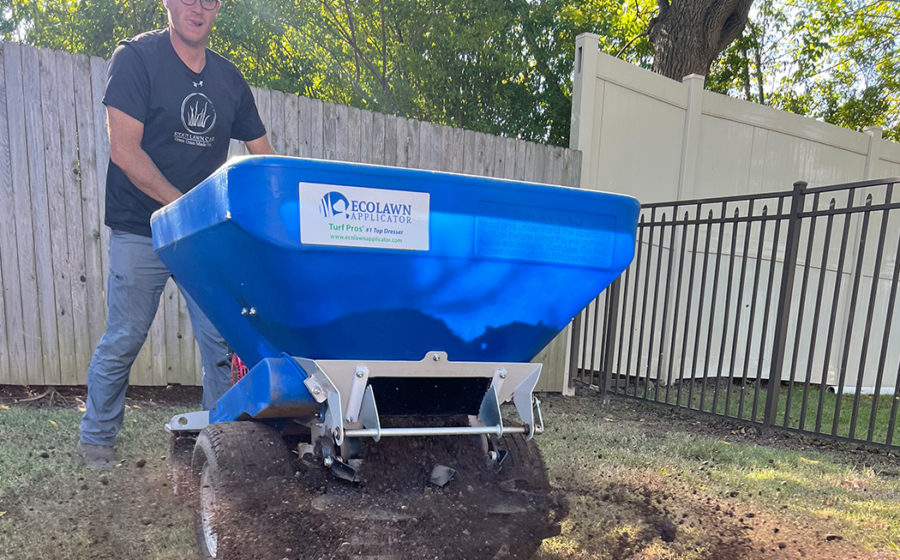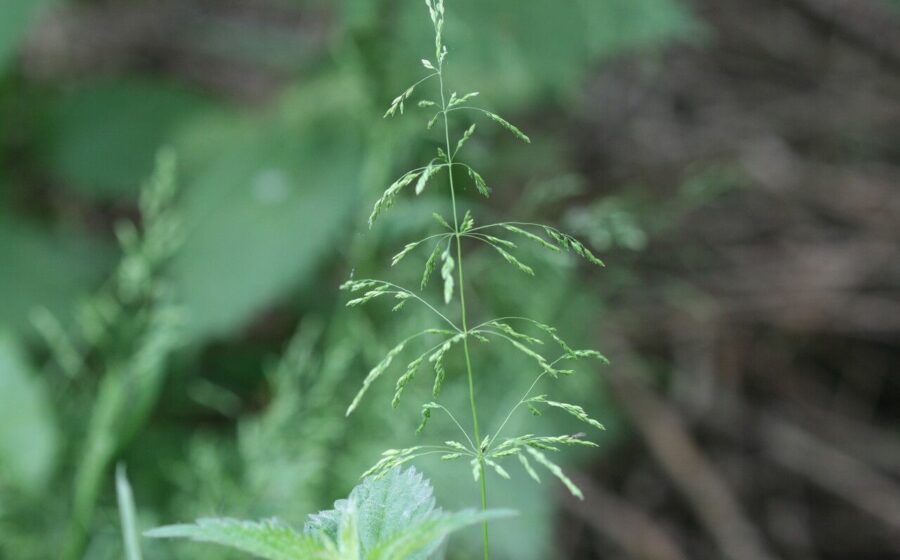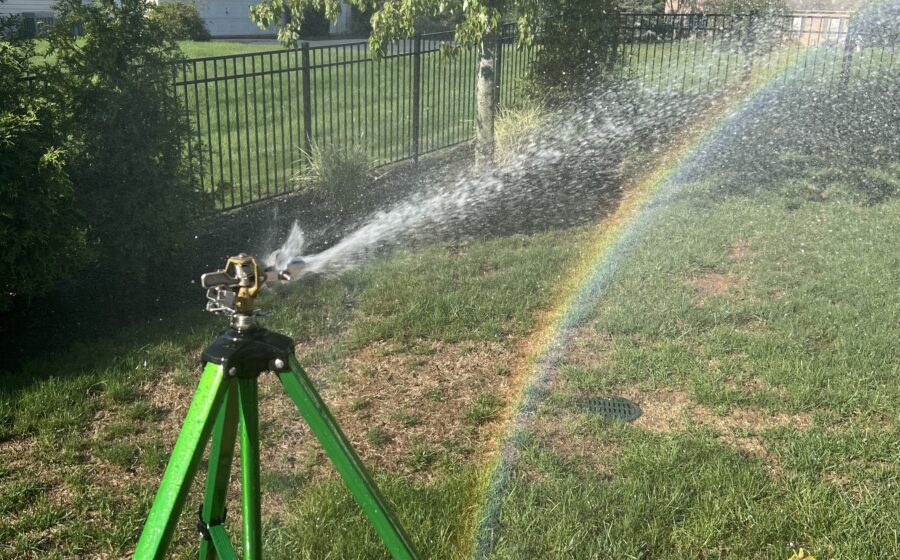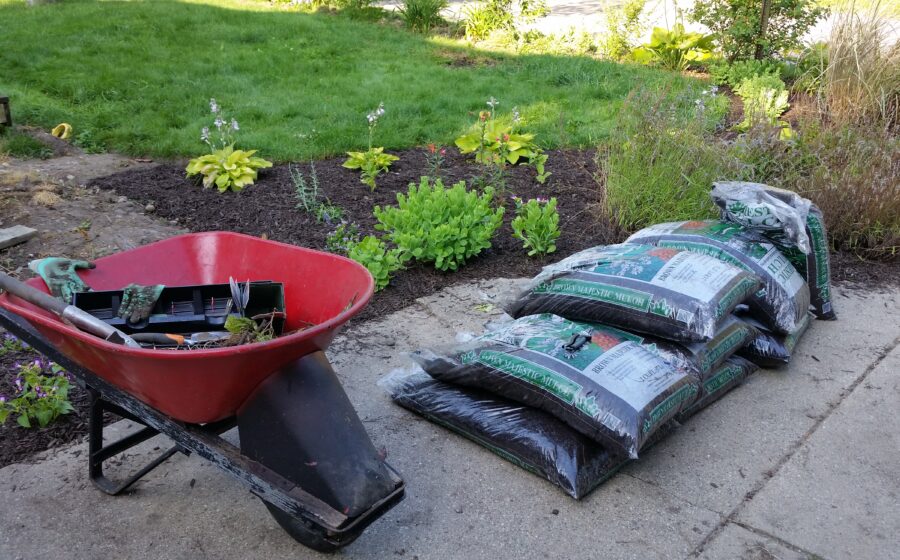- (610) 507.8873
- contact@stoutlawncare.com
Frozen Grass Damage
Frozen grass is very delicate and can be damaged easily by foot traffic or cars driving over it. Most times the grass will recover in the spring growing season but it will look like an alien walked or drove over your lawn until then. It is best to keep traffic to a minimum on a frozen lawn.
Aeration, Overseeding and Top Dressing After Care Instructions
WATERING!!!
Once service is completed, you’ll want to water your lawn, keeping it evenly moist.
Water for approximately one hour in the early morning or evening time frame. You want to continue watering once each day until your lawn seeds germinate, which can take 2 weeks. Then resume normal watering practices.
SHOULD I PICK UP SOIL PLUGS AFTER AERATING?
When you first get core aeration services, you might see those tiny soil cores scattered about your lawn.
These cores are part of the benefits of aerating a lawn. These soil plugs break up and disappear pretty quickly into the grass and soil after a short time of mowing and watering. This adds organic matter back into your soil, enriching it and helping to increase germination after seeding.
CAN I WALK ON THE LAWN AFTER AERATING AND OVERSEEDING?
To achieve the maximum benefits of aeration and overseeding, staying off of your lawn as much as possible after the process is a good idea. You want your lawn to be able to repair itself before you use it for recreation again.
What does this mean in terms of timing? Keep foot traffic to a minimum for at least two weeks.
HOW SOON CAN I MOW AFTER AERATING AND OVERSEEDING?
Mowing weekly during the growing season is important for maintaining a healthy lawn, encouraging thicker growth. So you might be wondering when to mow after overseeding.
When grass first germinates, it’s very tender. So it’s important to wait 2 weeks until the seed has germinated. Mow later in the day so the ground isn’t as wet and don’t collect those clippings. Let them fall to the ground so you recycle nutrients and any leftover seed your mower may have picked up during mowing. Lastly, you want to mow on a high setting. We recommend 3 1/2 to 4 inches.
HOW LONG DOES IT TAKE FOR THE GRASS TO GROW?
Germination rates will vary depending on the weather. When the weather is warmer, you can expect to see growth between 10-14 days. As the weather starts to cool down, germination will slow to about 14-28 days.
Why are some of my grasses different colors?
The simple answer is, we live in a transition zone and that allows for multiple different types of grasses to survive and thrive during different times of the growing season. For instance, fescues, bluegrasses and rye-grasses prefer cool nights and warm days, which is aligned with our northeast climate. Now…with that being said, we do live in a “transition” zone. Sometimes, southern grasses can survive and thrive in our climate. Some examples of these grasses are zoysia, bent and Bermuda. Fortunately, not having a monoculture is a good thing. You want different types of grasses in your lawn at all times. This will prevent a total loss if something effects one type of grass.
To Bee or not to Bee
To Bee or not to Bee, that is the question. With April showers past us, it’s time for those beautiful May flowers. With those flowers comes the all important Bee. These guys and gals are busy pollinating away and making that delicious honey. Bees can be a nuisance but they are way more beneficial than bad. Here is a quick list to help identify these all important insects.
Outdoor Insect Prevention
With the warmer temps approaching it time to start breaking out all the outdoor furniture. Get those patios and deck hosed off and cleaned up for all those outdoor gatherings. What does that also mean, bugs and lots of them.
The first thing that can be done is to clean those gutters. Debris and leaves get stuck, causing areas where water builds up and mosquitoes and other insects can thrive. We always recommend cleaning them 1 to 2 times a year, usually spring and fall.
Take a look around your property and look for any standing water, maybe some old flower pots or left over winter toys.
Change out those lightbulbs….Replace your white bulbs with yellow bulbs, the yellowish light is undesirable to some insects.
Also here are a couple plants that help control the insects. So on your next trip to the home store stop and grab a couple of these plants, and plant them around all those hang out spots.
Lemongrass
Petunias
Chrysanthemums
Marigolds
Lavender
Lemon Thyme
Mint
Sage
Rosemary
SHOULD WE WATER IN THE SPRING?
Not in most cases. But, (there’s always a but) it really does depend on the weather. In any typical year during April and May, Mother Nature will provide adequate rainfall for your turf. In some years, she may even provide too much moisture. In those cases, we would recommend our Fungicide Program to correct any issues that may arise.
In the extremely rare case of a dry May, we would recommend weekly watering, but of course, we will send you a note proactively to remind you. Check back in late May for updates on our Summer time watering advice.
Proper Mowing
Why is mowing so important? It can be the most important determining factor in a successful lawn. Here are some tips we recommend:
1. Mow High. We recommend 3.5” to 4” (this typically are the top 2 settings on your mower) The longer the grass , the deeper the roots grow, giving them better access to water and nutrients.
2. When to start? Give you grass a change to come fully out of its winter dormancy phase. Let it get a little shaggy, maybe your neighbors will look at you a little funny. Give it an extra week and then mow on the highest setting. This will get your lawn ready for the mowing season.
3. Train your grass. Once you have the lawn at 3.5” to 4”, keep it there! When the hot/dry summer months start, switch to a bi-weekly mowing schedule. If in a drought situation and not watering, wait until the grass starts to grow again, typically after a few storms.
4. Sharp mower blades! Our recommendations is to buy an extra set and keep one set sharp at all times. Switch them out 2 times a year, spring and late summer. Sharp blades can reduce the likelihood of disease by up to 25%.
Mulching
Why are you hearing so much about mulch this time of year?
There are a couple different reasons but mainly, weeds. Nobody likes them and they are hard to keep out of the flower beds.
Here are a couple of helpful tricks for your mulching process and some ways to improve the lawn too.
- Use good mulch. Most local nurseries have a great selection of high quality mulch. Most of these companies will deliver it right to your doorstep at a pretty good price. Most of them can also help you with measurements and/or estimates on how much you would need. Who doesn’t like supporting they’re local nurseries instead of the big box stores?
- Edges, edges, edges. We can’t stress enough how important it is to have a defined edge between your mulch beds and your turf. These edges will help keep weeds out of the lawn and also help with proper drainage. We recommend edges to be at least 2 to 4 inches deep.
- Using pre-emergent 2 to 3 times a year can greatly reduce the amount of weeds that you see in your beds. All of these nurseries have it available in many different size options. We would recommend putting down pre-emergents once in the early spring, once in late spring, and once in late fall. By doing this, you can greatly reduce the amount of weeds in your flower beds, which reduces the chances that those weeds could reach your lawn.
- Maybe hold off an extra 2 weeks. Most people want to get their flowerbeds looking sharp for the spring but that can sometimes have an adverse reaction. Oftentimes, trees are sprouting new growth that comes with a lot of debris and undesirable objects in the mulch. We recommend waiting till the very end of April or even mid May to mulch. This will also help avoid April showers that can wash away some of the color.
- Lastly, if you’re not up for the task, please reach out to a local landscaper in your area. If you cannot find one please give us a call and we have many different companies that we can recommend in the Tri-County area.
To Seed or Not to Seed???
Is it best to seed in the spring or the fall?
Our suggestion really depends on the project at hand. With that said, for most situations we would not recommend seeding in the spring and here is why…
It is the perfect time during the early spring months (March, April and May) to control weeds for the year. Applying a pre-emergent early in the spring is key to controlling your lawn’s nemesis, crabgrass! Without this application, you will be fighting those pesky weeds all year long.
Seeding in the spring can disrupt the timing and effectiveness of those pre-emergent applications. Also, early spring is generally not recommended because the plant does not have time to develop the deep root system needed to survive the hot summer.
Autumn has a great mix of warm soil and cool air which is ideal for seeding. This also gives the plant enough time for the root system to develop ahead of the winter months.
WHY CHOOSE STOUT LAWN CARE
We are locally owned and operated. We looooveee grass. We live, breathe and surround ourselves with everything grass.
We are in your community and are just getting started. If you are reading this we most likely service your area.
We Support what you support, the local community . Here are some of those organizations and small businesses,
- 422 Sportsplex
- Nor Gwyn Baseball
- Hello 422
- Boyertown Healthy Run Series
- KaraJo Skin Care and Bee Farm
- Jim Crawford Realty
Just to name a few…..and so many more coming for the 2022 season.
We love to communicate. We think we have mastered the art of communicating. We are no means perfect but we are darn close. Your questions will be answered in a timely manner and we get back within minutes not hours.
And last but not least… of course…
“GREEN GRASS MADE EASY”
We talk turf, let us know if you have any questions. Stout Lawn Care
- ‹ Previous
- 1
- 2
- 3
- Next ›











